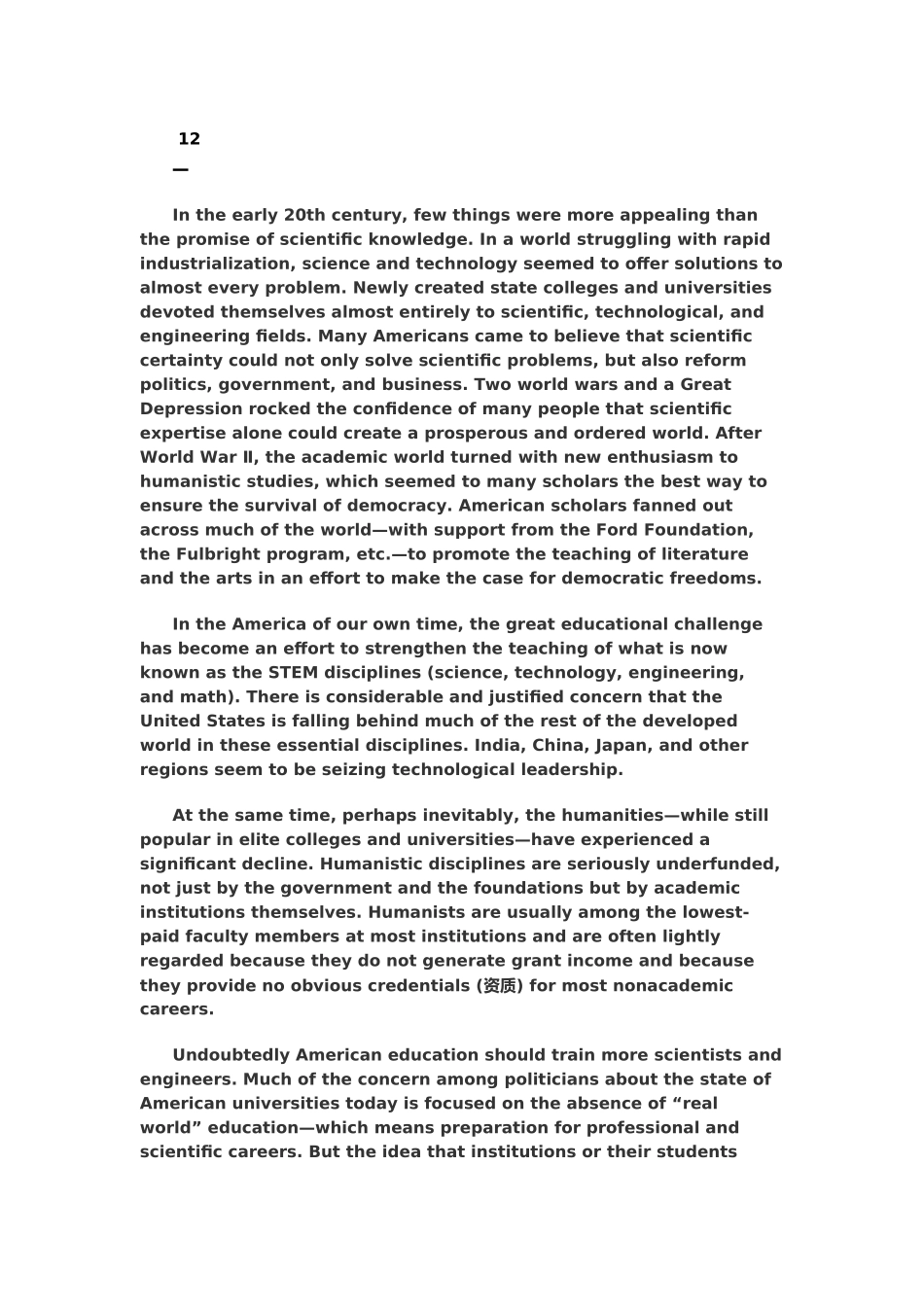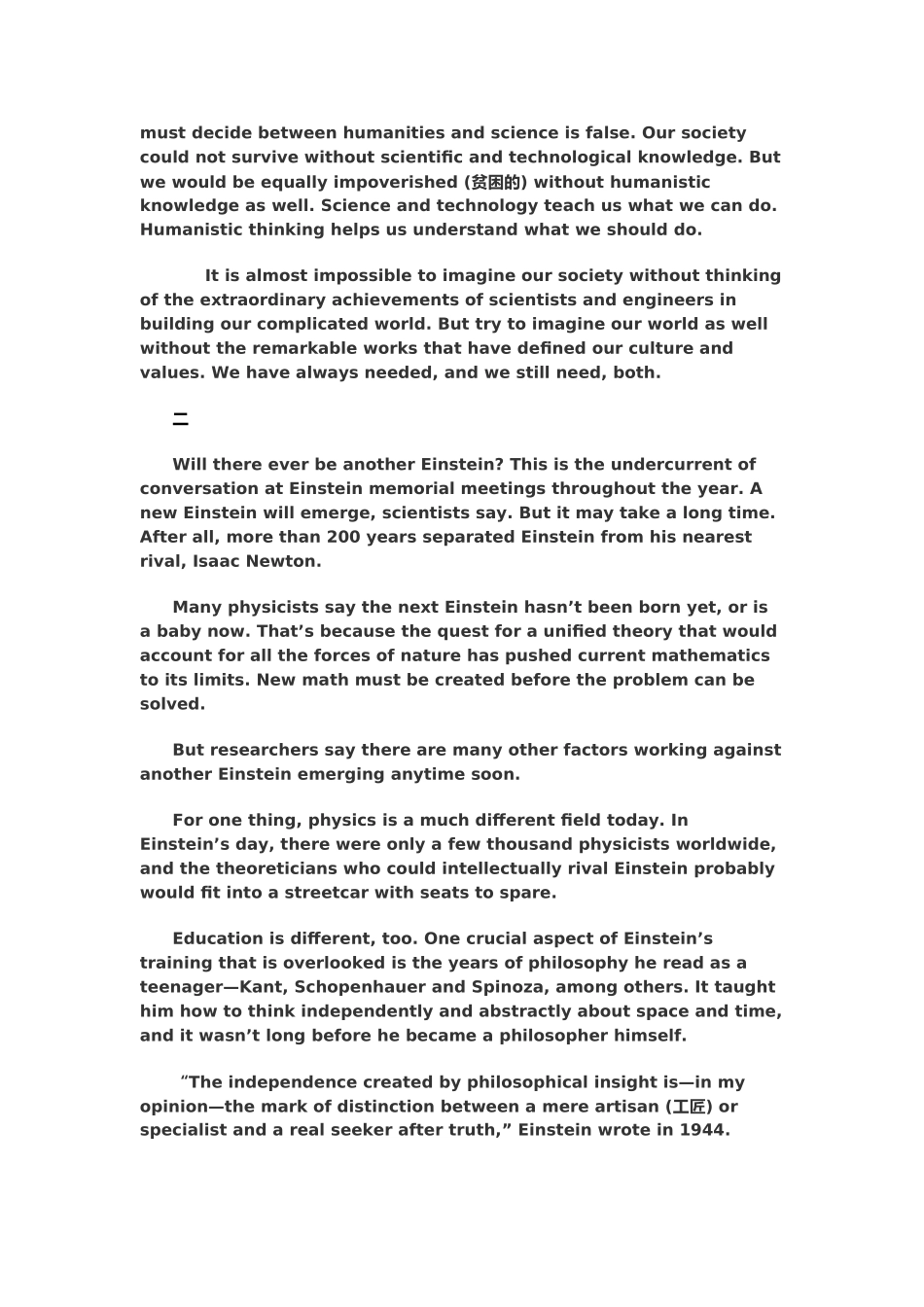六级真题阅读原文汇总 12一In the early 20th century, few things were more appealing than the promise of scientific knowledge. In a world struggling with rapid industrialization, science and technology seemed to offer solutions to almost every problem. Newly created state colleges and universities devoted themselves almost entirely to scientific, technological, and engineering fields. Many Americans came to believe that scientific certainty could not only solve scientific problems, but also reform politics, government, and business. Two world wars and a Great Depression rocked the confidence of many people that scientific expertise alone could create a prosperous and ordered world. After World War Ⅱ, the academic world turned with new enthusiasm to humanistic studies, which seemed to many scholars the best way to ensure the survival of democracy. American scholars fanned out across much of the world—with support from the Ford Foundation, the Fulbright program, etc.—to promote the teaching of literature and the arts in an effort to make the case for democratic freedoms. In the America of our own time, the great educational challenge has become an effort to strengthen the teaching of what is now known as the STEM disciplines (science, technology, engineering, and math). There is considerable and justified concern that the United States is falling behind much of the rest of the developed world in these essential disciplines. India, China, Japan, and other regions seem to be seizing technological leadership. At the same time, perhaps inevitably, the humanities—while still popular in elite colleges and universities—have experienced a significant decline. Humanistic disciplines are seriously underfunded, not just b...


